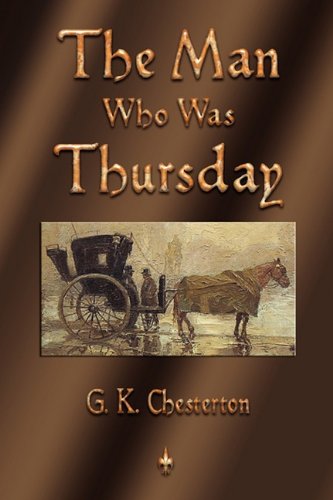

A “very mild-looking mortal” with “meek blue eyes,” who endures his adversary Gregory’s outbursts “with a certain submissive solemnity,” Syme is less meek than he looks.


A self-styled “poet of law,” Syme is a bird so improbable that the story’s villain, Lucian Gregory, calls him a “contradiction in terms.” Yet even for his general honesty and wholehearted embrace of his strange, paradoxical identity, Syme is not who he appears. While the vivid scenes - by turns gloriously beautiful and utterly frightening - shift with an unnatural, unnerving rapidity, the story’s unlikely hero and title character, Gabriel Syme, gives the story some measure of consistency and coherence. Whenever Chesterton has finished painting one scene he discards it and moves on to the next, and temporally, the sequence of the scenes makes no sense. A fine morning for an al fresco breakfast on a balcony overlooking Leicester Square gives way to a wild afternoon chase through snowy London streets. A small dive that serves lobster and fine French champagne becomes a well-guarded underground bunker. Even if the people were not “artists,” the whole was nevertheless artistic.Īfter Saffron Park Thursday moves rapidly through a succession of bizarre sets, the speed of each succession heightening the story’s nightmarish quality. The place was not only pleasant, but perfect, if once he could regard it not as a deception but rather as a dream. The deceptive appearances and is-it-a-dream sleight of hand start on Thursday’s first page, with Chesterton’s description of Thursday’s opening set, a fictional bohemian London suburb called Saffron Park: Reading Thursday is a little like walking through a house that’s equal parts madhouse, haunted house, and fun house. The particular kind of nightmare Chesterton wrote in Thursday’s pages was the kind where the ground constantly shifts underfoot, where the vivid scenery never stays put – where little, if anything, is as it appears. “Nightmare” may not be a literary genre unto itself, but in Thursday Chesterton almost made it one. Like so many statements Chesterton uttered, his statement about Thursday’s subtitle at first looks like hyperbole but, on closer inspection, turns out to be unvarnished truth. Chesterton no end that nobody seemed to notice The Man Who Was Thursday’s subtitle: “A Nightmare.” It especially bemused him because, as he said in his introduction to a 1926 stage adaptation of Thursday, “that sub-title is perhaps the only true and reliable statement in the book.” And in two, though man does not perceive it.Īnd terrifies them with warnings.


 0 kommentar(er)
0 kommentar(er)
